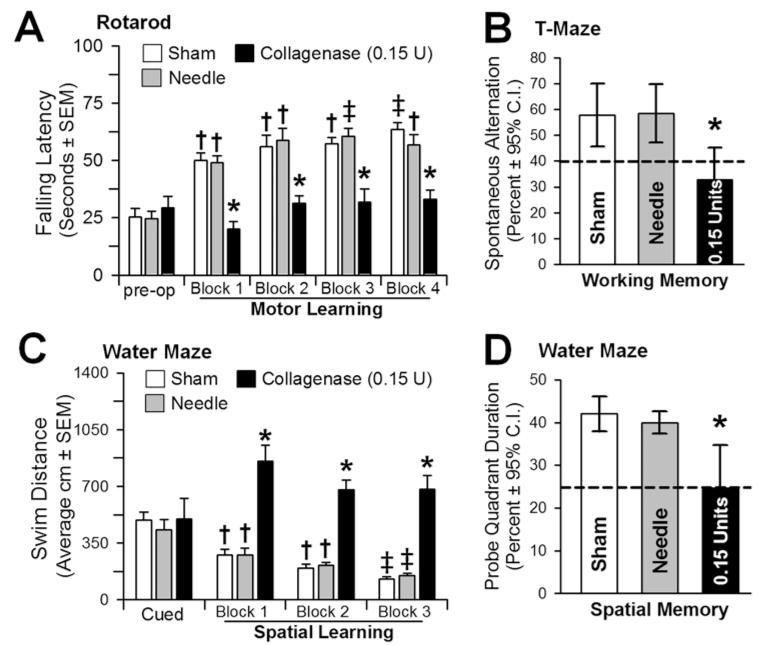Fig. 4.
Neurocognitive ability at 3 weeks. A: Motor learning assessed by the change in the latency to falling off an accelerating rotarod (2 rpm/5 sec) preoperatively and across 4 daily blocks. B: Working memory quantified by the number of spontaneous alternations in the T-maze. C: Spatial learning assessed by the swim distance needed to find the visible (cued) versus the hidden (spatial) platforms in the water maze. D: Spatial memory was determined by the percent duration in the probe quadrant when the platform was removed. Values expressed as the mean ± SEM (rotarod, cued and spatial water maze) and mean ± 95% CI (T-maze and probe quadrant), n = 8 (sham and needle trauma), n = 7 (collagenase infusion, 0.15 U). *p < 0.05 compared with controls (sham and needle trauma). †p < 0.05 compared with preoperative (rotarod) or cued trials (spatial water maze). ‡ p < 0.05 compared with Block 1 (rotarod and spatial water maze).

